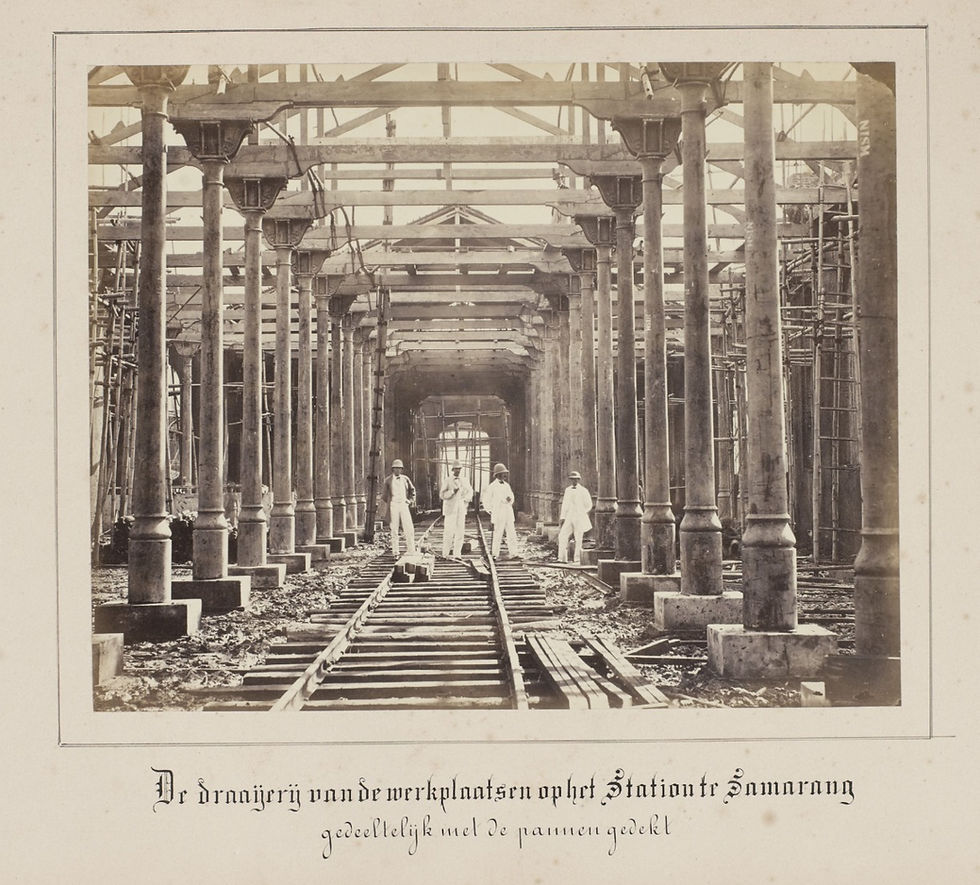Board of Directors of Samarang-Joana Stoomtram Maatschappij
- Museum Kota Lama
- Oct 14, 2023
- 2 min read
"On 18 March 1881, J. F. Dijkman, W. Walker, and G. H. Baron Clifford were granted a license to build and operate a steam tramway between Semarang, Demak, Kudus, Pati, and Joana, based on the Governor General's decree of 18 March 1881 No. 5."

M. A. H. Baron van der Goes, a Dutch politician who worked in the railway department of the Dutch East Indies, had the idea of establishing a private railway and tram company to open up the northern part of Central Java, including Demak, Kudus, Pati, Rembang, Jepara, and parts of Blora, Grobogan, Bojonegoro, Tuban. This idea was based on the consideration of the many plantations and sugar factories (Suiker fabriek) located in the Pati and Kudus areas (Santoso in Kurniawan, 2017: 6), as well as several other areas which are the largest producers of kapok (cotton) commodities, teak wood, tras (silica rock material) and other building materials. Based on this idea, Baron van der Goes and C.L.J Martens applied for a concession to establish the Samarang-Joana Stoomtram Maatschappij.
On 18 March 1881, J. F. Dijkman, W. Walker, and G. H. Baron Clifford were granted a license to build and operate a steam tramway between Semarang, Demak, Kudus, Pati, and Joana, based on the Governor General's decree of 18 March 1881 No. 5. With the concession granted, the Samarang-Joana Stoomtram Maatschappij was established on 28 September 1881.

Samarang-Joana Stoomtram Maatschappij used the Zustermaatschappijen or Sister Company system, together with three steam railway and tramway companies including Semarang-Cheribon Stoomtram Maatschappij (SCS), Serajoedal Stoomtram Maatschappij (SDS), and Oost-Java Stoomtram Maatschappij (OJS). These four companies were granted concessions to build and utilise tram lines in certain areas of Java. Despite appearing to be independent, the four companies were in fact organised under one consortium of investors.
The Zustermaatschappijen or Sister Company system created a system of staff transfers, which was very beneficial as staff could share and gain experience while moving from one company to another. However, it was usually only European employees who had the opportunity to transfer to other companies and positions, while local staff were very rare. Another programme that emerged from the Zustermaatschappijen or Sister Company system is the regular meetings between the four companies that serve to share experiences and strengthen relationships between the companies. Every year, the four companies organise regular meetings and gatherings which include:
A meeting between the Chief Operating Officers headed by the Chief Representative of the Company in the Indies.
Meeting between the Heads of Public Works and Railway Services.
Meeting between the Heads of Service and Towing Equipment of the Locomotive Network.
The management structure of the SJS was determined by the level of education of the employees and their competence in a particular field. Positions in the upper and middle classes were occupied by employees from the European class, while the native (inland) people were only placed in low-level positions. The highest positions held by local people and recorded in De Tramwegen op Java, Gedenkboek, 1907, were as Head of the Halt, Clerk, Machinist, and Railway Supervisor.



Comments